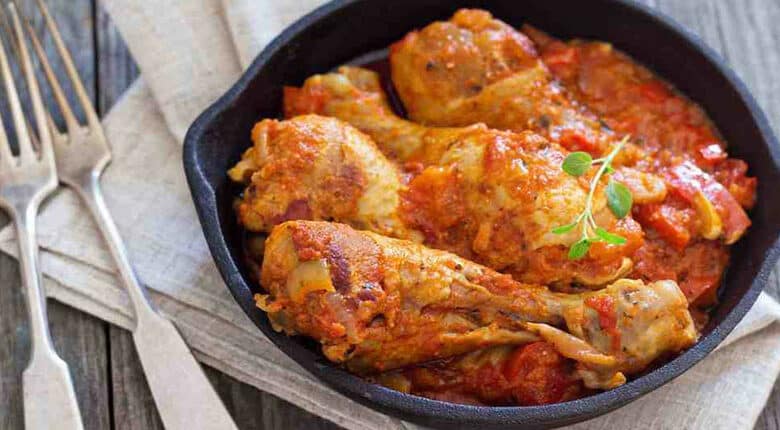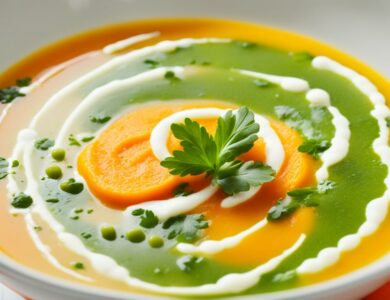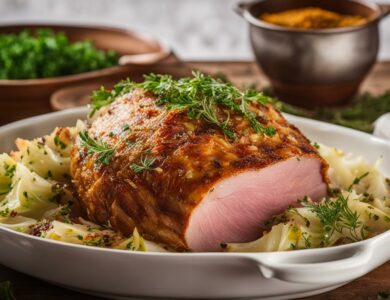
In the heart of Africa lies a vibrant and diverse culinary landscape, with a myriad of flavors waiting to be explored. One such tantalizing dish is Chicken Muamba, a traditional Angolan delicacy that reflects the rich cultural heritage of the region. This article will take you on a flavorful journey, guiding you through the history, preparation, and cultural significance of this mouthwatering dish.
What is Chicken Muamba?
Chicken Muamba, also known as “Muamba de Galinha,” is a traditional Angolan chicken stew. It is renowned for its bold and aromatic flavors, combining influences from African, Portuguese, and indigenous Angolan cuisines. The dish features tender chicken pieces simmered in a rich and spicy red palm oil sauce, accompanied by an assortment of vegetables.
The History of Chicken Muamba
Chicken Muamba has a storied history that dates back centuries. The dish originated in the Central African country of Angola, where it quickly became a staple in the local culinary repertoire. Over time, the recipe evolved, incorporating new ingredients brought by Portuguese traders and explorers. Today, Chicken Muamba stands as a symbol of Angolan heritage and a testament to the blending of cultures through the ages.
Ingredients
To prepare an authentic Chicken Muamba, you will need the following ingredients:
- 1 whole chicken, cut into pieces
- 2 onions, finely chopped
- 3 garlic cloves, minced
- 2 tomatoes, diced
- 2 bell peppers, sliced
- 2 carrots, peeled and sliced
- 1 cup okra, trimmed and halved
- 1 cup pumpkin, peeled and cubed
- 1 cup fresh spinach leaves
- 2 tablespoons red palm oil
- 1 tablespoon vegetable oil
- 2 tablespoons lemon juice
- 1 tablespoon ground ginger
- 1 tablespoon ground paprika
- 1 tablespoon ground chili pepper
- 1 bay leaf
- Salt and pepper to taste
Cooking Equipment
Before embarking on your culinary adventure, ensure you have the following cooking equipment:
- Large pot or Dutch oven
- Wooden spoon
- Knife and cutting board
- Mixing bowl
Step-by-Step Instructions
Step 1: Marinating the Chicken
Begin by marinating the chicken pieces in a mixture of lemon juice, minced garlic, ground ginger, and a pinch of salt. Allow the chicken to marinate for at least 30 minutes, allowing the flavors to infuse.
Step 2: Preparing the Vegetables
While the chicken is marinating, prepare the vegetables. Chop the onions, dice the tomatoes, slice the bell peppers, peel and slice the carrots, trim and halve the okra, and peel and cube the pumpkin.
Step 3: Cooking the Onions
In the large pot or Dutch oven, heat the vegetable oil over medium heat. Add the chopped onions and sauté until they turn translucent and slightly golden.
Step 4: Adding the Spices
Add the ground paprika, ground chili pepper, and bay leaf to the sautéed onions. Stir well, allowing the spices to release their flavors.
Step 5: Adding the Chicken
Add the marinated chicken pieces to the pot, stirring to coat them with the onion and spice mixture. Cook the chicken until it is lightly browned on all sides.
Step 6: Adding the Palm Oil
Now, add the red palm oil to the pot, giving the stew its distinctive red hue and unique flavor. The palm oil will enrich the dish with its nutty taste and velvety texture.
Step 7: Simmering the Stew
Lower the heat and let the stew simmer for about 20 minutes, allowing the chicken to cook thoroughly and absorb the flavors of the spices and palm oil.
Step 8: Adding the Vegetables
Next, add the diced tomatoes, sliced bell peppers, sliced carrots, and halved okra to the pot. These vegetables will infuse the stew with vibrant colors and complementary tastes.
Step 9: Cooking the Muamba
Allow the stew to simmer for an additional 15-20 minutes, or until the vegetables are tender. During this time, the flavors will meld together, creating a harmonious symphony of tastes.
Serving Suggestions
Chicken Muamba is traditionally served with a bed of fluffy white rice, allowing the flavorful sauce to seep into the grains. For an authentic Angolan experience, consider serving it with “funge,” a polenta-like dish made from cassava flour. Garnish the stew with fresh spinach leaves for an extra burst of color and nutrition.
The Cultural Significance of Chicken Muamba
Beyond its culinary appeal, Chicken Muamba holds immense cultural significance for the Angolan people. It is often served during festive occasions, weddings, and family gatherings, symbolizing unity and abundance. The preparation and sharing of this cherished dish bring people together, fostering a sense of community and celebration.
Tips and Variations
- To enhance the flavors further, you can add some crushed peanuts to the stew, providing a delightful nuttiness and added texture.
- For a spicier kick, consider adding a chopped chili pepper or a dash of hot sauce to the stew.
- If you cannot find red palm oil, you can use regular vegetable oil, but it will alter the dish’s authentic taste.
Conclusion
Authentic Chicken Muamba is more than just a sumptuous dish; it is a culinary journey that connects you to the rich history and culture of Angola. Its tantalizing flavors and cultural significance make it a truly unique experience. So, embark on this gastronomic adventure and savor the delights of Chicken Muamba with your loved ones.
FAQs
- Is Chicken Muamba very spicy?
- The level of spiciness can be adjusted to your preference. You can make it mild or extra spicy by controlling the amount of chili pepper used.
- Can I substitute red palm oil with other oils?
- While red palm oil gives Chicken Muamba its authentic taste, you can use regular vegetable oil as a substitute.
- Can I use boneless chicken for this recipe?
- Yes, boneless chicken can be used. However, using bone-in chicken adds more depth of flavor to the stew.
- How long does it take to cook Chicken Muamba?
- From start to finish, the cooking process takes around 1 to 1.5 hours, depending on the chicken’s size and tenderness.
- Can I freeze the leftovers?
- Yes, you can freeze the leftovers for up to three months. Reheat it slowly on the stovetop or in the microwave before serving.



